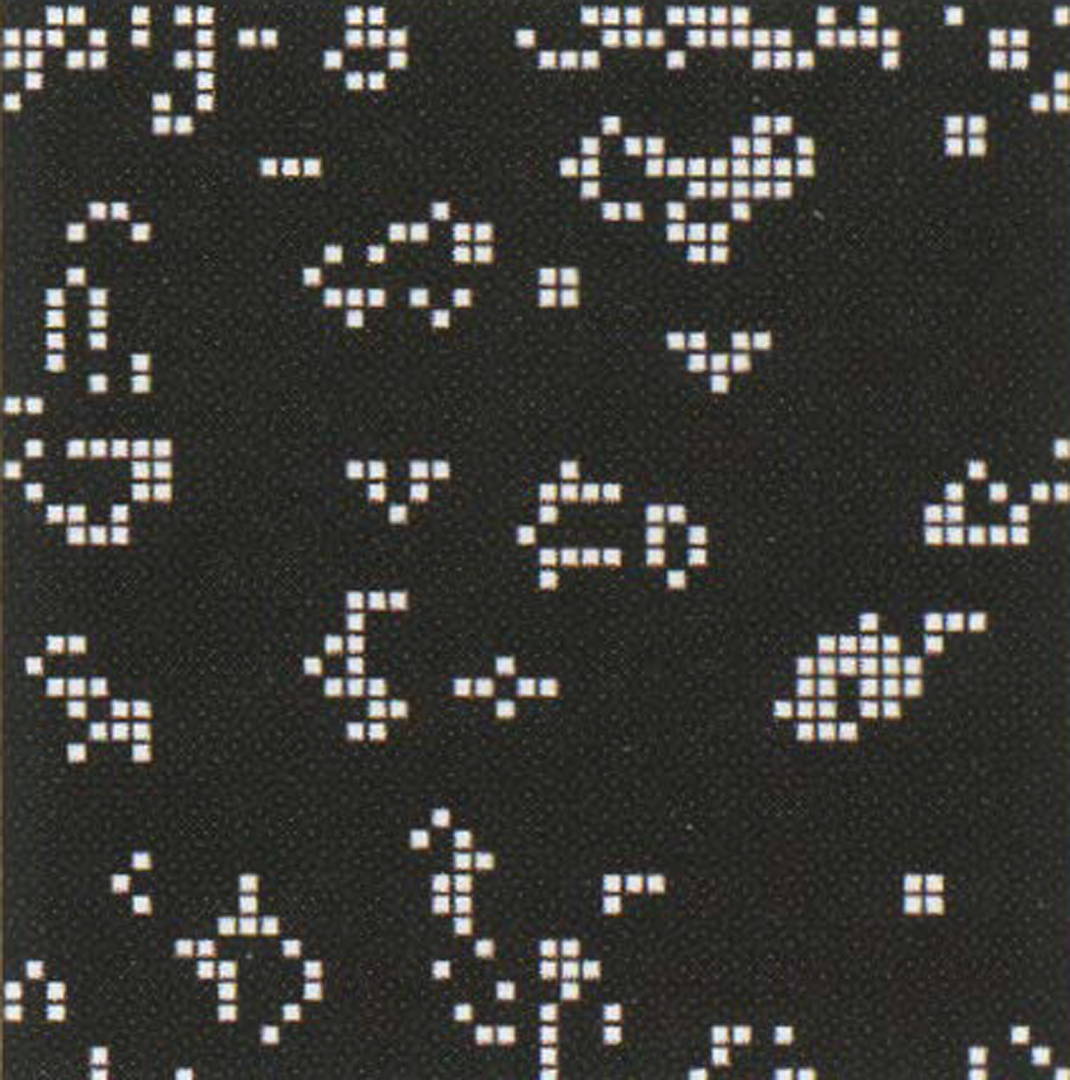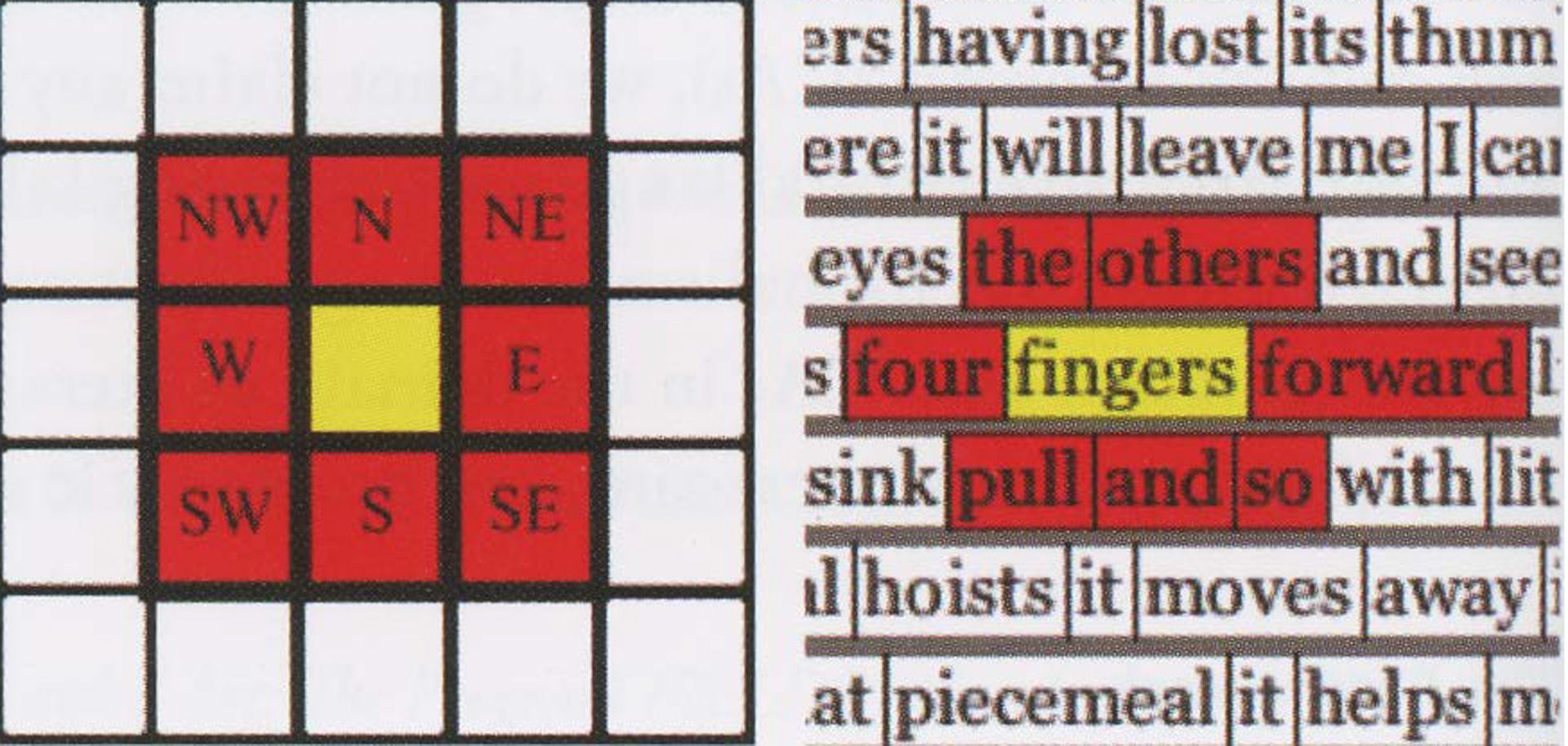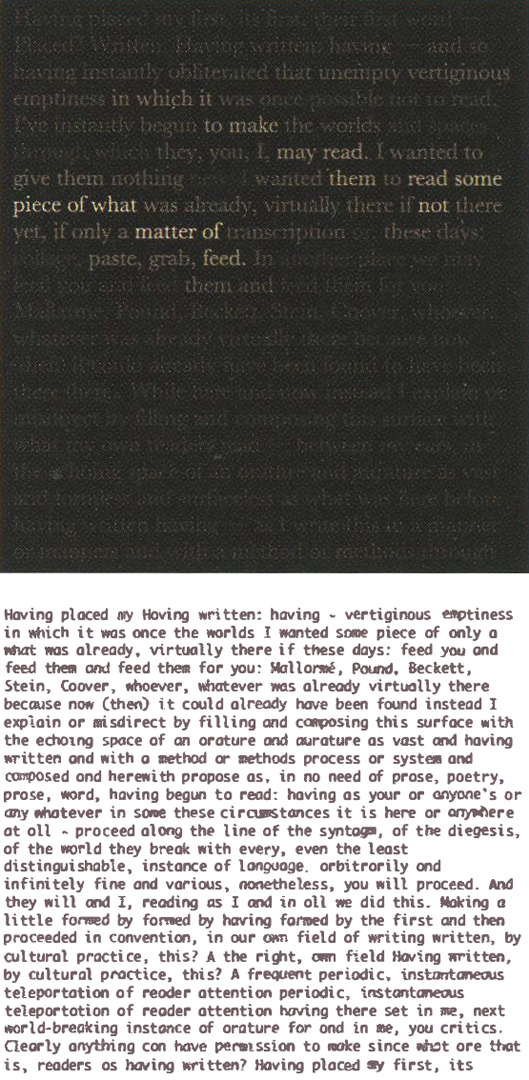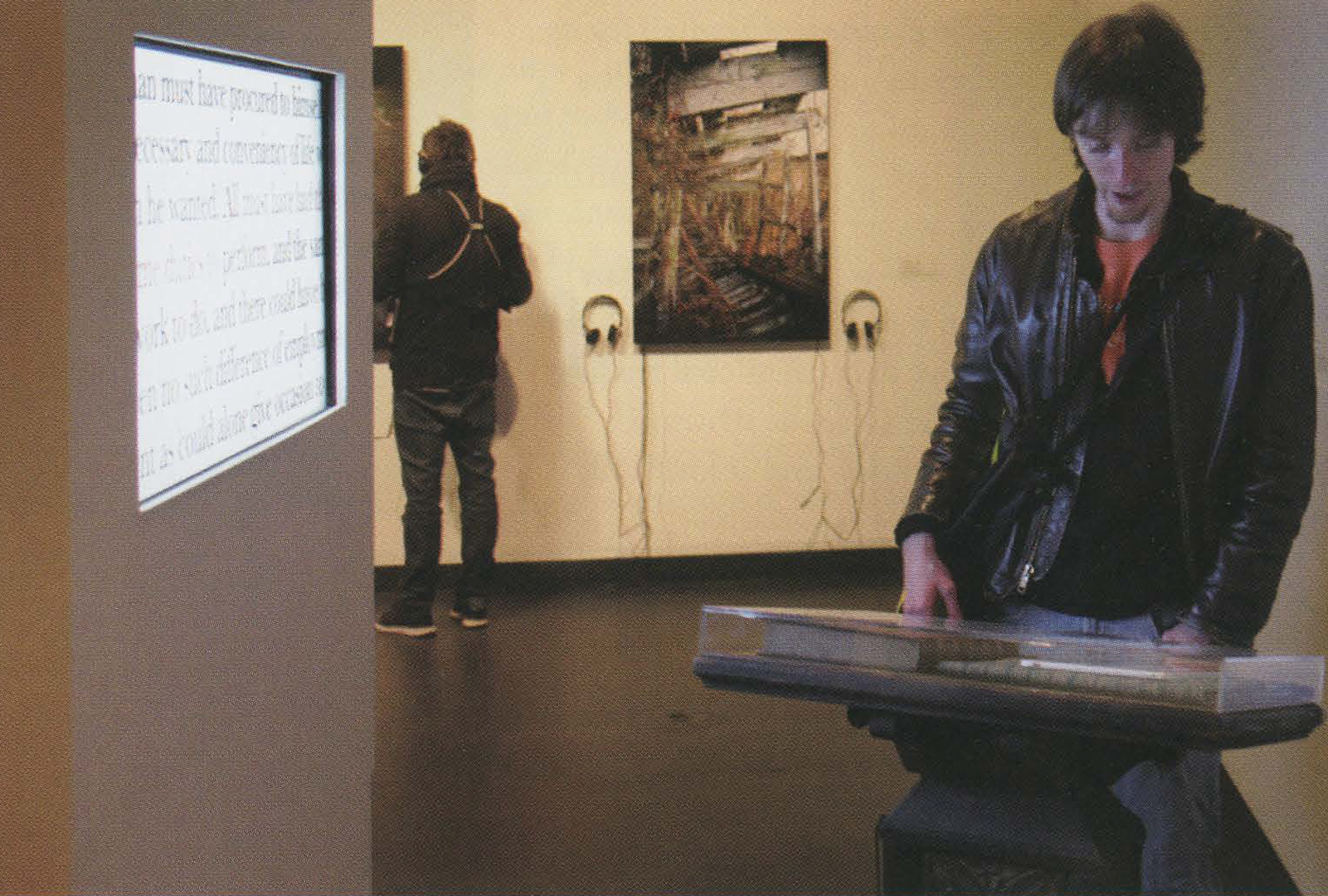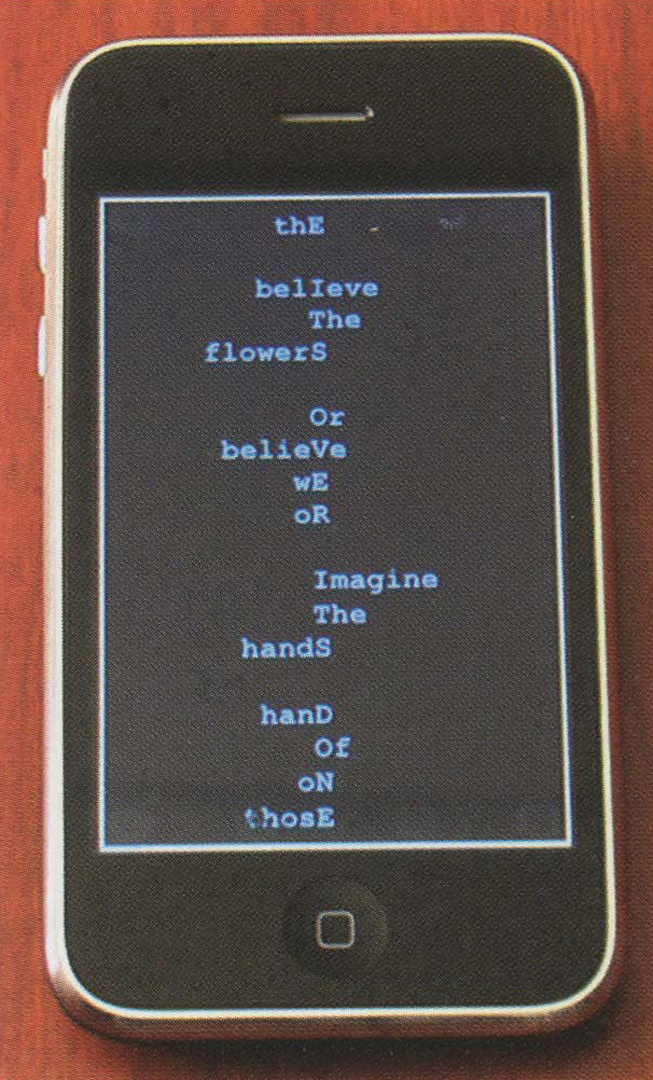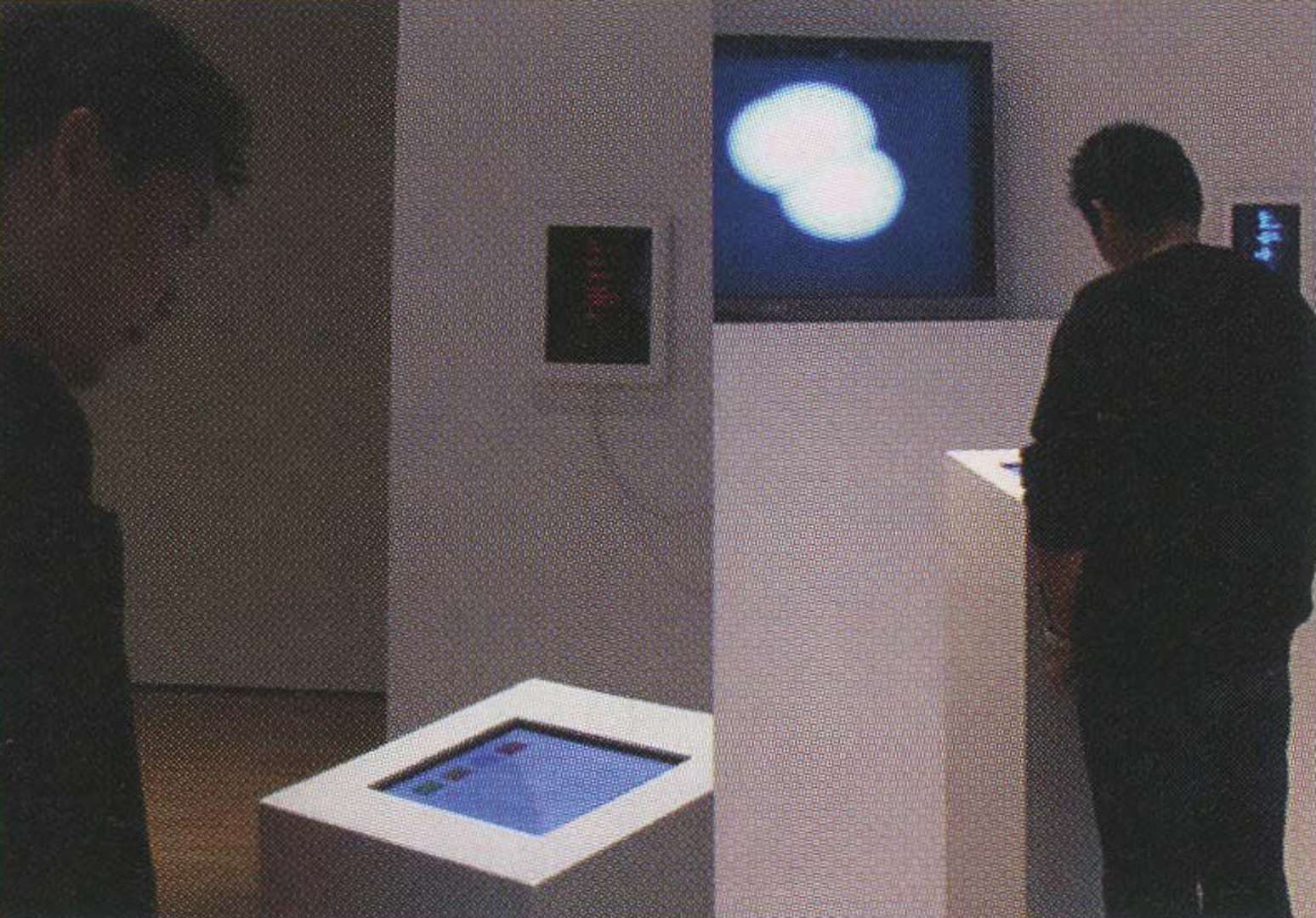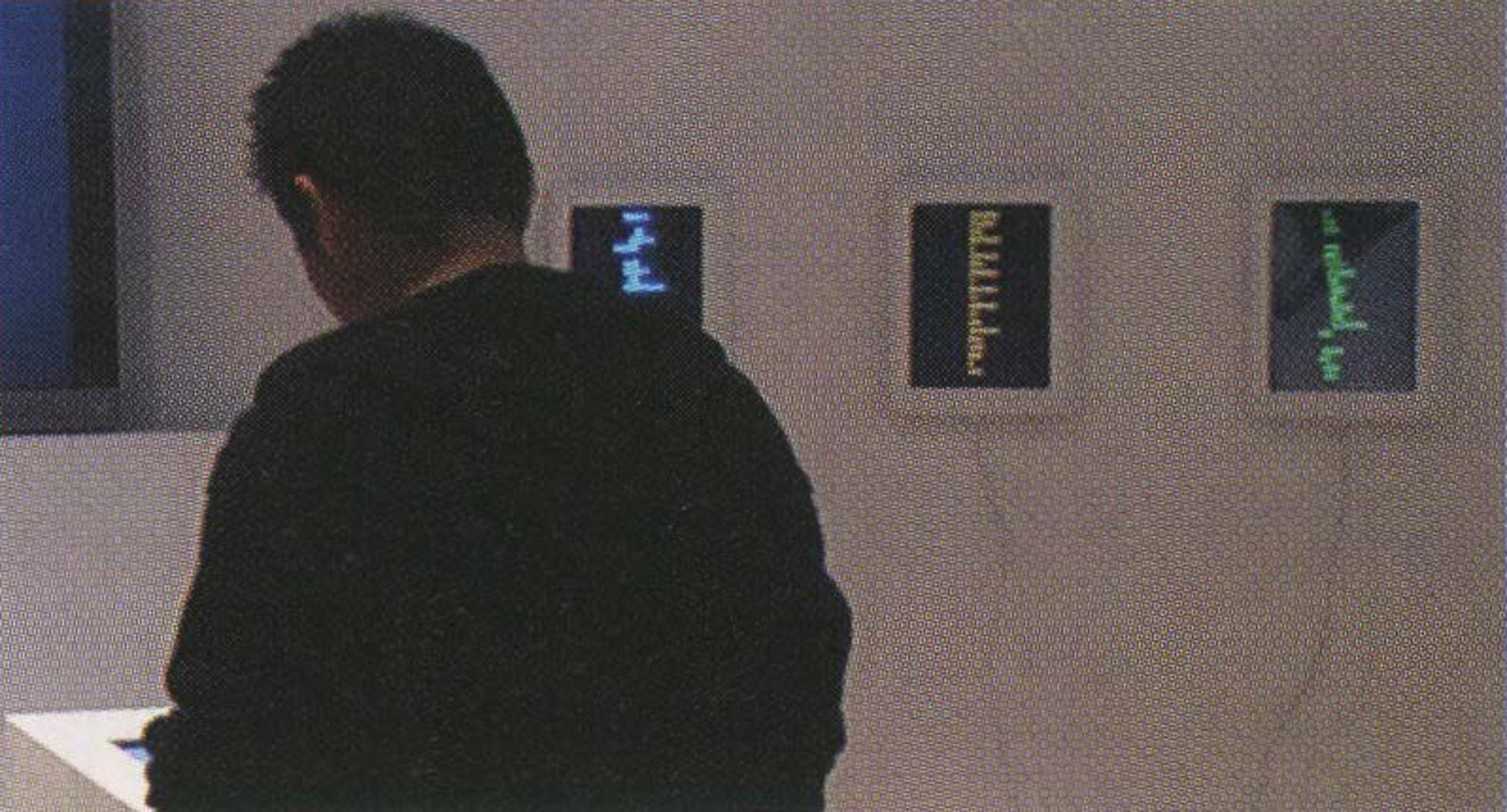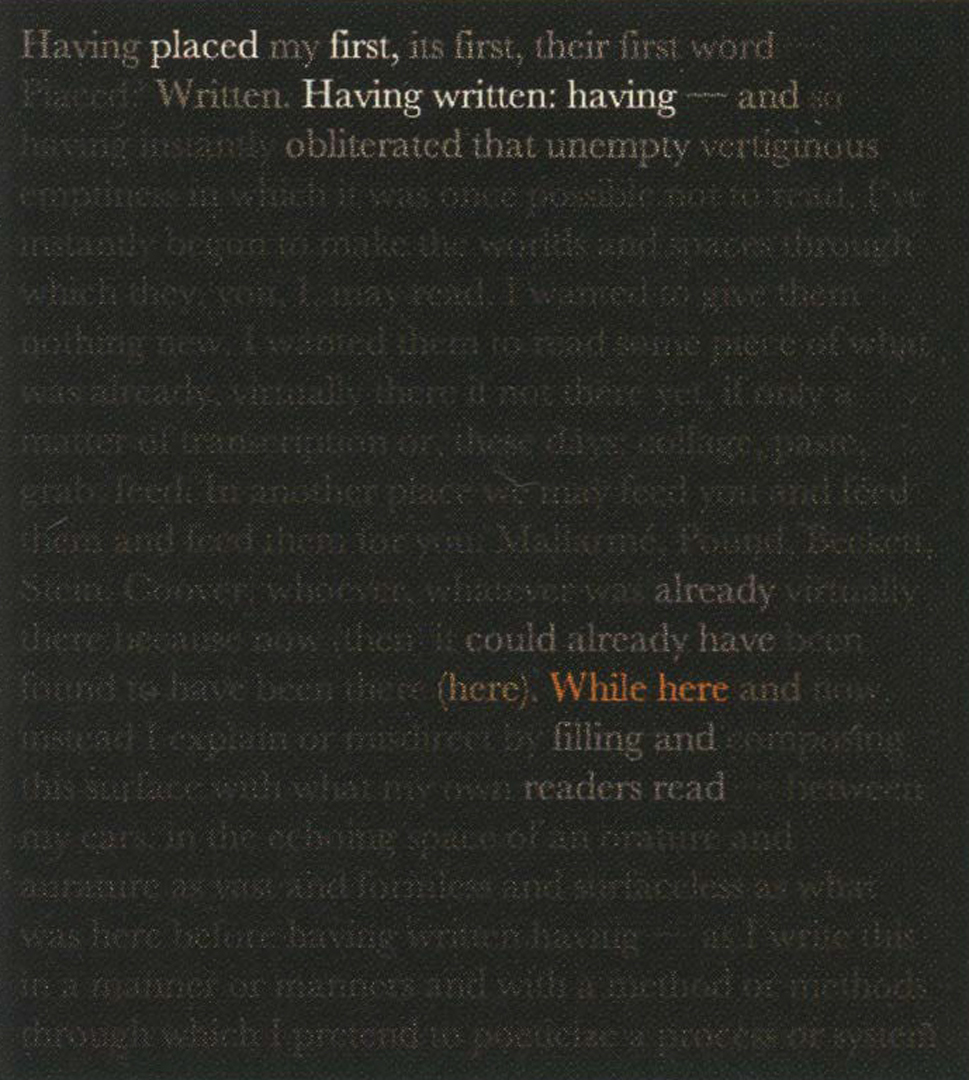Daniel Howe, John Cayley: The Readers Project
Artist(s):
Title:
- The Readers Project
Exhibition:
Creation Year:
- 2011
Medium:
- Computer software
Category:
Artist Statement:
The Readers Project was begun in 2009 in response to the question, “How might cellular automata play out a ‘game of life’ – or rather a ‘game of reading’ – on the (complex) surface of a text?” [1] In the best-known form of the game of life [2], the grid on which the cellular
automata live and die maps out generations of binary distinctions. (Figure r) This grid and the automata’s behaviors are one and the same. By contrast, a textual grid is inherently complex, bearing all the structure of natural language, despite remaining – as graphic representation – unambiguously two-dimensional and, indeed, both grid-like and cellular [3]. While certain 2D characteristics of visible language may have inspired us to ask our question about reading and cellular automata (CAs), we do not claim any regular or formal relationship between CAs and our expressive natural language processing [4]. In fact, while cellular automata have proven a productive formalism in a range of art contexts [5], there has been surprisingly little experimentation with CAs in the domain of literary art. The Readers Project thus represents an initial foray into this interesting and problematic space.
Technical Information:
The Readers Project is an aesthetically oriented system of software entities designed to explore the culture of human reading. These entities, or “readers,” navigate texts according to specific reading strategies based upon linguistic feature analysis and real-time probability models harvested from search engines. As such, they function as autonomous text generators, writing machines that become
visible within and beyond the typographic dimension of the texts on which they operate. Thus far the authors have deployed the system in a number of interactive art installations at which audience members can view the aggregate behavior of the readers on a large screen display and also subscribe, via mobile device, to individual reader outputs. As the structures on which these readers operate are culturally and aesthetically implicated, they shed critical light on a range of institutional practices – particularly those of reading and writing – and explore what it means to engage with the literary in digital media.

